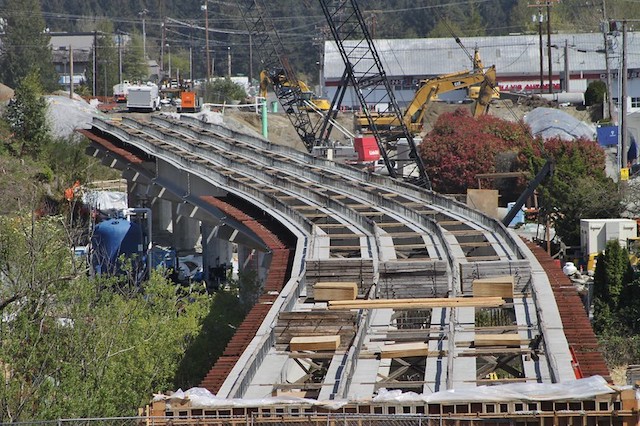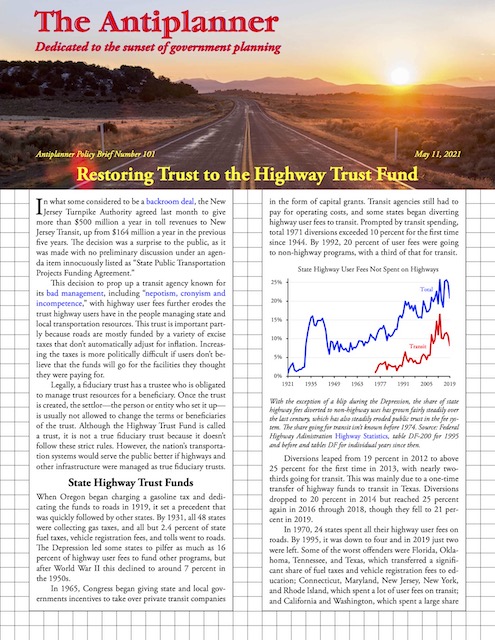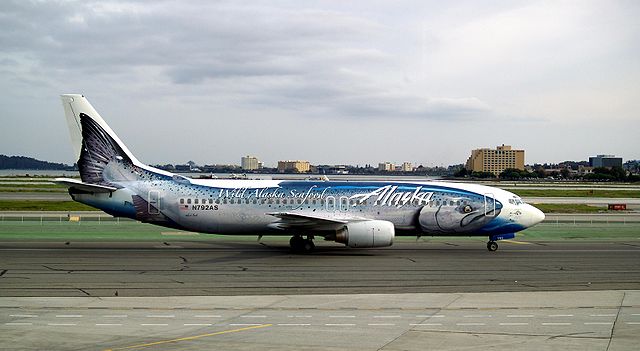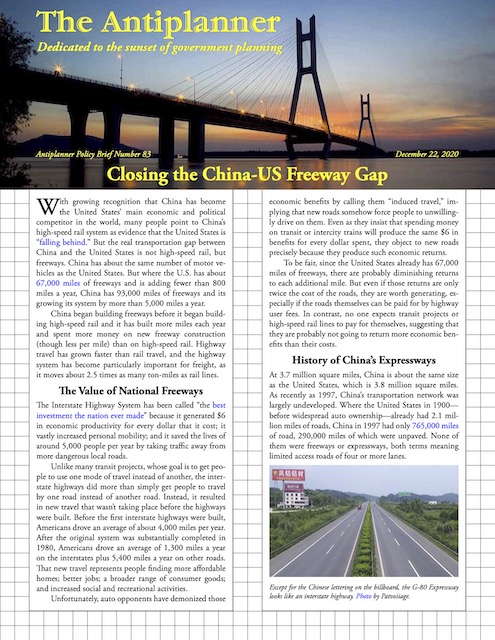Last Monday, I predicted that if Glenn Youngkin won the Virginia governorship, Republicans in Congress would demand more cuts from the infrastructure bill. Nancy Pelosi apparently read my post, as she had the House hastily vote on the infrastructure bill just a few days after Youngkin’s victory. By passing the Senate bill unamended, Pelosi gave fiscal conservatives no opportunities to try to change the bill in conference. Before the Virginia election, Pelosi had been delaying a vote in order to pressure centrists to support the $3.5 trillion non-infrastructure bill, which will now be much harder to pass.
Passage of the infrastructure bill means tens of billions of dollars will be spent on needless and wasteful projects like this Seattle-area light-rail project. Photo by SounderBruce.
As passed, the infrastructure bill is really two bills: first, a reauthorization of federal spending on highways and transit; and second entirely new spending on highways, transit, Amtrak, electric vehicles, airports, ports, clean water, clean energy, and broadband. This entirely new spending is almost entirely unnecessary as the infrastructure crisis was mostly made up in order to get Congress do what it always does, which is throw money at problems. Continue reading











